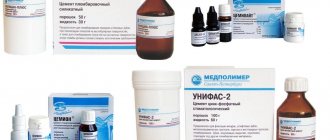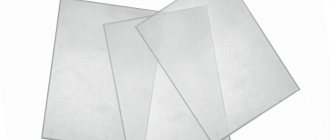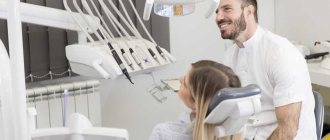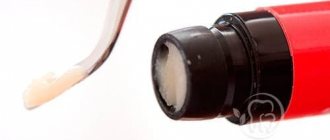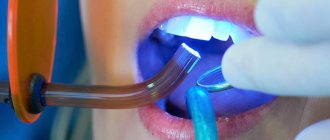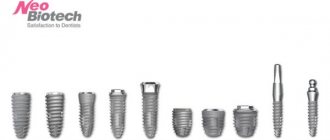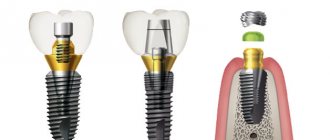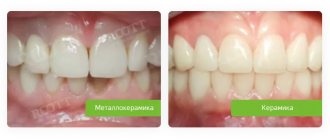1970
In dentistry, cements are a class of materials intended for fixation of orthodontic appliances and fixed dentures (fixing materials).
They are also used to create a barrier between the pulp and the filling (gaskets), filling and forming a tooth stump (restorative compounds).
All cements are divided depending on their base - zinc phosphate, silicate, polycarboxylate, etc. Glass ionomer cements are considered the most modern and high-quality today.
Purpose and properties of the material
The brand of dental glass ionomer cements Fuji (Fuji) belongs to the company GC (Japan). Founded in 1921, GC is today a world-renowned manufacturer of dental products.
The company produces more than 600 types of materials, instruments and equipment for dental treatment. Due to their high quality, GC glass ionomer cements are in demand and are sold all over the world, including in Russia.
The basis of glass ionomer cements (GIC) is aluminofluorosilicate glass crushed to powder and polyacrylic acid.
The advantages of the material include high chemical adhesion to enamel and dentin, long-term release of fluoride, significant tensile and compressive strength, hypoallergenicity, and biocompatibility with human oral tissues.
One of the main disadvantages of GIC is its slow hardening. The initial hardness, which occurs 4-5 minutes after the start of mixing, is provided by calcium ions linking polyacrylic acid chains.
This process is unstable due to the solubility of calcium compounds in water or, on the contrary, dehydration. Final curing, provided by aluminum ions, occurs in a period of 2 weeks to 6 months.
Modification of glass ionomer cements with composites allows for faster curing due to photopolymerization of the composite, as well as giving the material greater hardness and aesthetics. Such cements are called “compomers” (a combination of the names “composite” and “ionomer”).
The GC company produces both unmodified glass ionomer cements (Fuji I (Fuji 1), Fuji II (Fuji 2), etc.), and modified (Fuji IX (Fuji 9), Fuji Plus Set, Fuji Plus-Powder, etc.) . The former are used mainly for fixing prosthetic structures, the latter – for dental restoration.
Provocateurs for the development of a cyst on the root of a tooth under the crown and methods for its treatment.
Come here to find out how much tooth depulpation costs before dentures.
This address https://www.vash-dentist.ru/protezirovanie/nesemnyie-p/koronki-np/kogda-trebuetsya-zamena-zubnyih.html is all about replacing dental crowns.
Overview of glass ionomer cement manufacturers
Despite the fact that the composition of the GICs of the main manufacturers is almost identical, the following line of leading manufacturers are distinguished in the domestic market of dental materials, firmly holding the rating for a long period of time. It is advisable to consider the features in more detail.
Arde Kwik Tsem
It is a fluid hybrid mixture of a double solidification principle. Ideal for attaching veneers, bridge devices, and inserting pins during restoration with implants.
Thanks to its unique structural content and viscous consistency, it ensures the highest quality filling of the tooth cavity.
It has a serious disadvantage - it can provoke individual intolerance and cause allergic reactions of varying degrees of intensity.
Arde Fix
It is used for permanent fixation of orthodontic and prosthetic devices. Not prone to dissolution and oxidation in the oral cavity. If the composition is mixed correctly, side effects and complications are completely excluded. May cause a short-term decrease in the sensitivity of taste buds, which resolves spontaneously after some time. It does not tolerate the presence of eugenol elements in the work area.
Fuji Plus
A distinctive feature of the mixture is its modification with a composite, which provides a number of advantages:
- stronger fixation;
- possibility of use when interacting with metal, non-metal, ceramic prosthetic structures of all types in the process of orthopedic manipulations.
The disadvantage is the weaker light reflectivity of the material in the solid state.
Ketak Tsem
The main advantage is simplicity and ease of use. Shorter time for manual mixing and bringing to the required consistency.
It has high aesthetic indicators - a matte, slightly silky surface, which is especially important when working on the frontal area of the jaw.
The disadvantage is sensitivity to low temperatures, which increase the hardening time.
Tsemion F
The composition has good radiopacity, withstands high mechanical loads in comparison with analogue products, and has a low solubility index.
Adhesive to enamel and dentin tissues.
Allows you to achieve a high level of marginal sealing, releases fluoride over a longer period of time, which helps strengthen tooth enamel. It has a low pain sensitivity threshold and causes virtually no discomfort in patients during the rehabilitation period after treatment.
ISO requirements
Requirements for dental cements are established by international standards ISO 9917-2-95 and 9917-91. The regulated parameters depend on the purpose of the cement. So compositions for filling dental canals should have:
- working time , max., min. – no more than 20;
- hardening time , hour – no more than 72;
- fluidity , min., mm – not less than 20;
- solubility ,% – no more than 3;
- film thickness , microns – no more than 50.
Restoration mixtures must meet the following requirements:
- compressive strength , MPa – not less than 130;
- erosion , mm per hour – no more than 0.05;
- hardening time , min – 2-6.
General requirements for dental cements include biocompatibility with the human body and tissues, uniform distribution of pigments, absence of foreign impurities, homogeneity of consistency and some others.
Disadvantages of glass ionomer cement
The material is not without its shortcomings, some of which are quite significant:
- long maturation of the cement composition - it completely hardens only a day after installation, despite the fact that the first setting occurs within a few minutes;
- in the first hours the mixture is sensitive to a humid environment - it is at that stage that active leaching of ions occurs, which slows down the processes of final polymerization;
- poor resistance of the structural content to mechanical vibration - the material cannot be affected by a conventional drill immediately after installing the filling;
- etching of organ tissue is unacceptable;
- limited use for complex caries with a deep damaging effect;
- poor resistance to diametric tension, which completely excludes the use of GIC for the treatment of occlusal surfaces, as well as in clinical situations when the load on the tooth is distributed in different directions;
- shorter service life compared to conventional cement composite;
- average level of aesthetics, which limits its use on the frontal areas of the jaw row.
Indications and contraindications
Indications for the use of Fuji cements are determined by the type of specific brand, and depend on its purpose (fixing, spacer, restoration). In particular, the last class of materials, which includes Fuji 9 and Fuji 8, are shown for:
- filling cavities of the 1st and 2nd classes of primary and permanent teeth (the latter without significant chewing load);
- filling cavities of the 1st and 2nd classes using the sandwich technique for restoration at any degree of load;
- class V carious cavities
- formation of a tooth stump for subsequent prosthetics.
Fixing compounds are used for fastening micro- and bridge-like prostheses made of various materials.
The main contraindication to the use of Fuji cements is the openness or thin thickness of the septum between the pulp and the filling. This obstacle is eliminated by placing calcium hydroxide pads on the pulp horns.
It is also possible that a particular patient’s body is hypersensitive to some component of the cement. In this case, a composition is selected that does not contain this element.
Advantages of installing Fuji fillings in Aristocrat-Dent dentistry
- Use of high quality cement with a long service life.
- Use of modern equipment and tools for filling.
- High professionalism and many years of experience of specialists.
The material has excellent light transmittance, so the filling will look as natural as possible. This is especially important when restoring the frontal area of the smile.
The cost of installing a Fuji filling in Moscow is affordable for most of our patients, and we accept payment in any convenient form. Our clinic guarantees the safety and effectiveness of the medical procedures performed. When visiting our dentist, adults and children feel as comfortable as possible.
We invite you to make an appointment by phone or online using a special form. The price of Fuji fillings is indicated on our website. We are waiting for your calls!
Instructions for use
The use of Fuji cements includes a number of sequential stages, which include tooth preparation, preparation of the prosthetic structure, mixing of the material and its use (fixation of the prosthesis or tooth restoration).
Tooth and structure preparation
When preparing the outer surface of the tooth for a crown, standard techniques are used. The tooth is ground using rotary instruments, cleaned with water and pumice, and dried moderately with air or a swab (the tooth should retain its shine).
Apply conditioner to the prepared surface for 10-20 seconds, depending on the brand used. Wash it off and dry the tooth again. After this, it becomes ready to fix the prosthesis.
When preparing the internal cavities of a tooth for an inlay, onlay or filling, the main attention is paid to protecting the pulp from the filling material - if it is open or located at a short distance from the filling.
In this case, a calcium hydroxide liner is applied to the bottom of the cavity or exposed pulp. There is no need to create retention points on the walls of the cavity.
Preparing for mixing
Preparing cement components for mixing involves two steps: reducing the density of the powder, which may be increased due to long-term storage (which can lead to inaccuracy in measuring the powder), and removing air from the spout of the bottle with liquid.
The first is achieved by lightly tapping the bottle of powder on the palm of your hand. The second is to hold it for a few seconds after turning the bottle of liquid over so that the air from the spout can rise to the top of the bottle.
After selecting the components from the bottles, you must remember to immediately close them tightly with stoppers.
Kneading
The mixing procedure is determined by the amount of the mixture prepared and the type of cement used, and is carried out in strict accordance with the instructions for the material.
If a small amount of cement is mixed, all the powder and liquid are mixed at once within 20 seconds. If the quantity is significant, the powder is divided into two parts.
The first is mixed with the liquid for 5 seconds, then the second part is added and mixed for 15 seconds. So the total mixing time is 20 seconds . The mixture should be used immediately after preparation.
It is recommended to mix large quantities of cement on a cooled sheet. This allows you to increase working time without losing technological properties.
In addition, the GC line of cements includes the Fuji Plus EWT brand, which, thanks to additives, has an increased working time. It can be used for complex restoration operations that require more time than usual.
The video shows the process of mixing cement.
Fixation and restoration
When fixing prosthetic structures, only the inner part of the crowns or the internal cavity for onlays and inlays is covered with cement, after which fixation is immediately carried out with a moderate load. Excess squeezed out cement is removed.
When restoring the coronal part of a tooth, cement is introduced into the cavity and compacted using a suitable instrument. At this stage, it is important to prevent the formation of bubbles in the thickness of the material.
A matrix can be used to shape the outer surface of the filling. When applying a filling, it is necessary to keep within 2 minutes of working time.
An important point in restoration technology is to protect the filling from moisture and dehydration, which can disrupt the process of primary hardening of the material. This is done by coating the filling with varnish (Fuji Coat or Fuji Varnish).
The finishing treatment of the filling or tooth stump should begin 6 minutes after the start of mixing. After finishing the treatment, you need to re-coat the filling with a protective composition to prevent it from getting wet or losing moisture.
The restored tooth can be loaded moderately no earlier than an hour after the filling is completed.
Characteristics of combined stamped crowns and indications for their installation.
This publication contains all the most important things about metal-free dental crowns.
Here https://www.vash-dentist.ru/protezirovanie/nesemnyie-p/koronki-np/metallicheskuyu-s-napyileniem.html find out what spraying is done on metal crowns.
Advantages of glass ionomer cement
Glass ionomers have the following advantages, in comparison with analogue filling materials:
- ease of use - cement fills the cavity in one or two portions. Its use does not involve the processes of preliminary etching of the area and bonding of dentin;
- the unique property of hardening even in a humid environment - this quality ensures the active use of the composition in the treatment of caries cavities in the cervical zone, elimination of wedge-shaped pathologies, as well as caries, the affected area is the area located below the gum level;
- connection of the component with the tissues of dentin and enamel according to the intermolecular principle - makes it possible to install fillings with excellent marginal fit and eliminates the need to create retention areas during the treatment of the organ;
- complete adhesion to compositions with clove oil - thus, GIC is used as insulating liners that protect fabrics from excessive attachment of composites to them;
- adhesion to metal components;
- the ability to release ion enzymes into the organ cavity for at least a year after the filling is installed;
- weak shrinkage during polymerization - at the moment of transformation into a solid state, cement slightly increases in volume, which partially compensates for shrinkage processes;
- no irritating effect on dentin and pulp tissue - their composition is not aggressive and not dangerous in the treatment of deep caries if cement is used as a spacer;
- the thermal expansion indicator corresponds to the coefficient of expansion of the organ tissue - in such a situation, the filling is fixed more reliably, lasts longer, and its marginal fit is an order of magnitude better. This is a good preventive protection against the formation of damage to the enamel surface - cracks, chips.
Release form, equipment and price
Typically, Fuji cements are sold in the form of two components - powder and liquid, located in different bottles. Less commonly used is the capsule form, in which the powder and liquid, separated by a septum, are in one capsule.
This form is convenient because it eliminates manual measuring and mixing. After activating and mixing the contents of the capsule (performed with certain tools), the cement is squeezed out of it into the prepared cavity.
The cement components (liquid, conditioner and powder) can also be purchased separately. Prices and equipment for some brands are shown in the table below.
| Material grade | Compound | Price, ₽ |
| Fuji I (Fuji 1) | Powder (35 g) Liquid (20 ml) | 5000 |
| Fuji IX (Fuji 9) | Powder (15 g) Liquid (6.4 ml) | 3500 |
| Fuji II (Fuji 2) Powder | Powder (15 g) | 4700 |
| Fuji II ( Fuji 2) Liquid | Liquid (6.8 ml) | 4500 |
Storage conditions and warnings
The shelf life of Fuji cements is 3 years if storage conditions are met: dark place, temperature 4-25 °C.
If components of the material accidentally come into contact with the oral mucosa or skin, they are immediately removed with a cotton swab soaked in alcohol, and the area is washed generously with water. If cement or its components get into your eyes, they should also be quickly rinsed with water and consult an ophthalmologist.
To prevent material from getting into the patient's oral mucosa, it is recommended to use a rubber dam.
Reviews
GC's glass ionomer cements have a reputation for quality materials that provide effective treatment. What does your personal experience say about this? If you have used Fuji brand materials, please tell us about the results of your treatment. You can leave your comment in the form at the bottom of this page.
If you find an error, please select a piece of text and press Ctrl+Enter.
Tags crowns fixed prosthetics
Did you like the article? stay tuned
Previous article
Orthodontic devices V.Yu. Kurlyandsky and their features
Next article
Reasons for installation and principle of use of the Begg orthodontic apparatus
